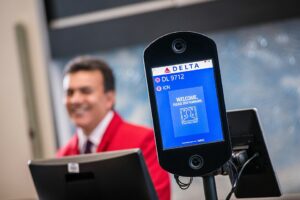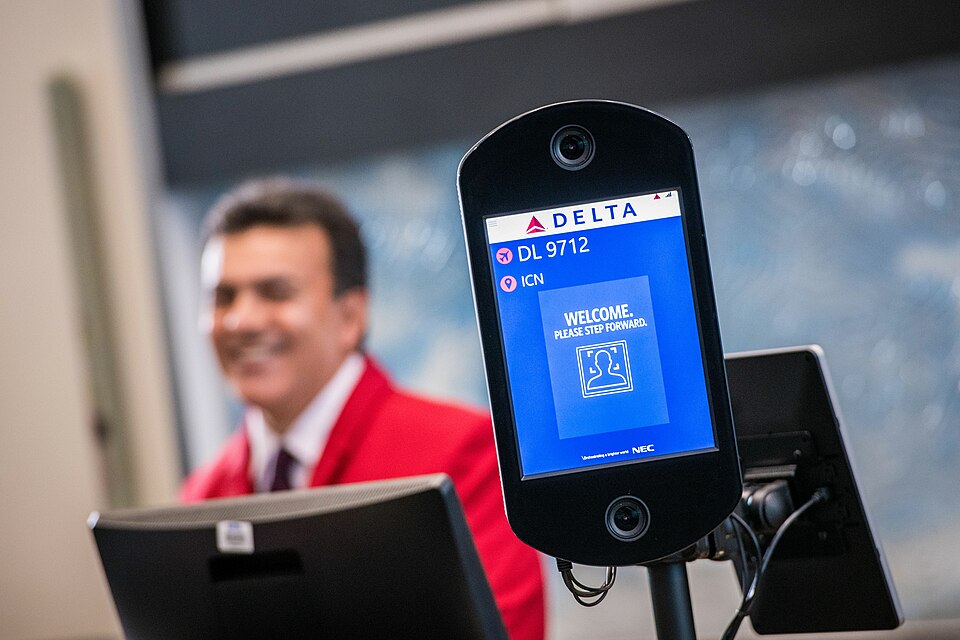
How does facial recognition work? There are different types, but they basically break the face down into a digital map and then compare those digital maps. It is similar to the way software like Shazam works out what a song is. All of the notes from all of the instruments are translated into a digital map, which is then compared to a library of digital maps of songs.
Facial recognition has been around since the 1960s, but it is a lot better now than it used to be. In the very beginning, the main goal was teaching a computer how to recognize what a face was. We can probably attest to how hard that is because we constantly see faces all over the place. Have you ever looked at a power outlet and thought it looked like a face? How do you teach a computer that a power outlet isn’t a face? Well, the same way you teach it anything: with enormous amounts of data. In the beginning, a human had to map out where a face was in a photo, but the machines learn quickly.
There are many different types of face recognition these days, but the type we are probably all most familiar with is the one that unlocks our iPhones. This has the same theory in that it turns the topography of your face into data. To do this, the phone projects infrared dots that you cannot see all over your face. In the same way that Lidar works, the phone can measure the time it takes for the light to come back and use that to work out distances. These are extremely accurate and the phone can use them to make a detailed map of your face, which it stores as data. It looks at the distance between your features, such as your mouth, nose and eyes. It looks at the depths of your eye sockets and the length and shape or your nose. It looks at the structure of the bone in your face. It doesn’t just send out a few points of light, it sends out about 30,000. When you go to open the phone, it scans your face and compares it to the data points it has on file. It isn’t a problem if you put on weight because the phone reevaluates your face each time you open it. Nobody puts on weight overnight, so the data stored in your phone changes as you change. You would have trouble if you injured your face to the extent that the shape had changed. In that case, you will need the password. Apple says that their facial recognition software is accurate to about one in a million. That is pretty good, but because there are 8 billion people on Earth, that means there are 8,000 people on the planet that can open your phone. The chances of one of those 8,000 people picking up your phone is pretty slim, though. The system will even work in the dark because it is sending out the infrared light itself and doesn’t require another light source.
All the iPhone has to do when someone tries to unlock it is to scan that person’s face and compare it against the digital map that it has stored. That is a lot easier than another type of face recognition which is used somewhere like an airport. There are two types of facial recognition going on in an airport. The first one is when you check in with your passport. A lot of airports these days use facial recognition to match you to your passport. The machine takes a photo of your face and then uses an algorithm to check that the photo it took matches the digital map stored in the passport. This is fairly simple. A far more complicated system is the one used by the computer that controls all of the cameras inside the airport. This system has to look at all of the faces of every person passing and compare them to a database of people on a no fly list. It works in a similar way, though. The first thing it needs to do is find the faces. That can be trickier if there are lots of people, but the technology is much better than it used to be. Then the face is turned into an image and mapped. The computer is looking at all of the main points on the face. The distance between the features, the size of the head, forehead, cheekbones, ears, nose, and anything else it can use. Once it has that, all it has to do is run through its database to see if there is a match. It doesn’t take long because the computer can make an enormous number of comparisons a second. This is the same reason it doesn’t take Shazam more than a few seconds to find a song. And this is what I learned today.
Sources
https://en.wikipedia.org/wiki/Facial_recognition_system
https://www.csis.org/analysis/how-does-facial-recognition-work
https://www.kaspersky.com/resource-center/definitions/what-is-facial-recognition
Image By Delta News Hub – Facial recognition technology at gate, CC BY 2.0, https://commons.wikimedia.org/w/index.php?curid=90633428

